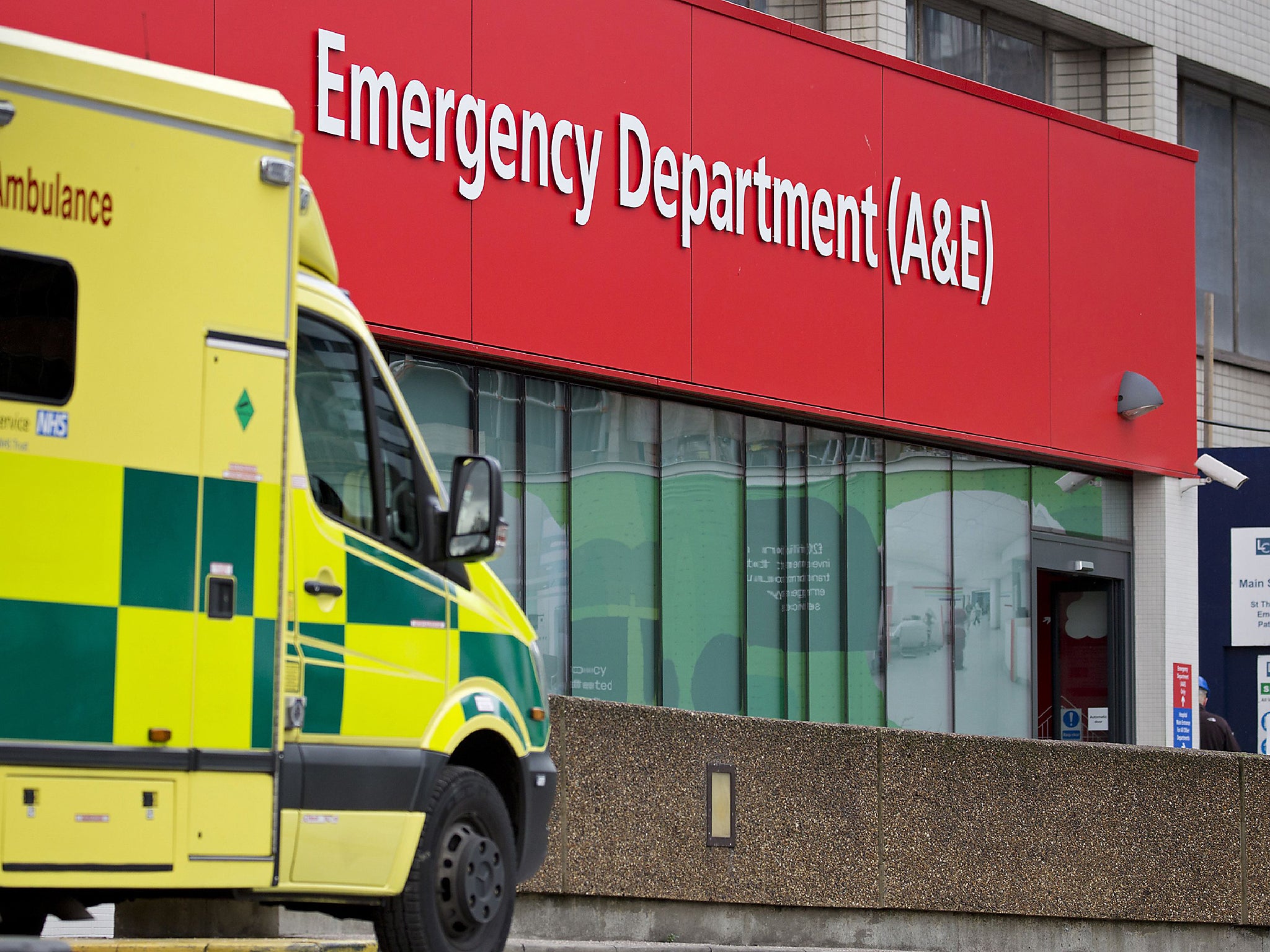NHS A&E waiting times hit worst levels on record, show latest figures
A record number of patients were kept waiting on trolleys in A&E departments as four-hour target performance hits new lows

Your support helps us to tell the story
From reproductive rights to climate change to Big Tech, The Independent is on the ground when the story is developing. Whether it's investigating the financials of Elon Musk's pro-Trump PAC or producing our latest documentary, 'The A Word', which shines a light on the American women fighting for reproductive rights, we know how important it is to parse out the facts from the messaging.
At such a critical moment in US history, we need reporters on the ground. Your donation allows us to keep sending journalists to speak to both sides of the story.
The Independent is trusted by Americans across the entire political spectrum. And unlike many other quality news outlets, we choose not to lock Americans out of our reporting and analysis with paywalls. We believe quality journalism should be available to everyone, paid for by those who can afford it.
Your support makes all the difference.Record pressures in NHS A&E departments last month were confirmed by official statistics today that show waiting times in emergency departments have hit their worst ever levels.
Just 77.1 per cent of patients were seen by “Type 1” A&E departments within the four-hour target in January 2018.
This is a fall from the previous record waits set just a month earlier, when 77.3 per cent of patients were seen within four hours.
Type 1 departments are “traditional” A&Es, for patients in cardiac arrest or after major trauma, and have a 24-hour service led by a consultant with full resuscitation facilities for acutely ill patients.
Figures also show 1,043 patients had to wait more than 12 hours on trolleys before being found a bed, double the previous month and exceeding the old record of 989 patients in January last year.
NHS England pointed to a slight improvement in overall A&E performance figures, which include waiting times at minor injuries units and walk-in centres.
It shows that 85.3 per cent of patients waited more than four hours, its second worst on record, compared to 85.1 per cent the previous month and in January 2017.
However, this still remains well below the target of 95 per cent of patients at all A&E sites being seen inside four hours – a target which has not been hit since 2015.
The figures confirm that A&E departments have been facing record-breaking pressures this Christmas.
It also shows that Theresa May’s claims of the NHS being better prepared than ever, and its “plan” to cancel non-urgent operations for tens of thousands of patients at the last minute, were not enough to counteract years of underfunding and a record flu outbreak.
NHS chiefs warned the health service is falling even further behind on waiting times, despite additional funding in the budget to put it back on track.
The Royal College of Surgeons highlighted that more non-emergency patients are waiting longer for treatment, just 88.2 per cent starting treatment 18 months from referral, below the target of 92 per cent.
“These performance figures show just how tough it was for hospitals this winter, with further lengthening of waiting times in A&E despite cancellation of planned surgery to free up capacity,” a RCS spokesperson said.
“Surgeons and other frontline NHS staff are working tirelessly to provide the best care possible to patients.
“But today’s figures show that these short-term measures to create extra capacity in the NHS are insufficient to meet NHS performance targets. We currently do not have adequate funding or capacity in our health or social care services and we need to urgently find a long-term solution.”
The work of front line NHS staff and managers to mitigate these pressures is evident.
Just 4,668 patients were delayed in hospital because of a lack of home support or capacity in community centres, according to figures on delayed transfers of care (Dtocs) for December.
This compares to 6,305 patients in December 2016, and is the lowest number since August 2015 – around the time the NHS was last able to hit A&E waiting times targets.
Delayed transfers, caused largely by a collapse in funding for social care and local authorities, impact all aspects of hospital performance as it means there is no space to move patients out of intensive care or admit them from A&E.
“A year ago we warned that corridors had become the new emergency wards,” said chief economist at the Nuffield Trust, John Appleby.
“It is deeply concerning that 12 months on the position has worsened, with many harrowing reports of patients being treated in busy corridors by stressed and overworked staff.”
In December, A&E doctors running major emergency rooms across England and Wales signed a letter to Theresa May warning that patients were “dying prematurely in corridors” because of these pressures.
“Today’s figures provide hard evidence on just how bad a winter the NHS is having: over 80,000 patients waited on trolleys for more than four hours at A&E in January, of whom over 1,000 were waiting for over 12 hours. These are the highest numbers since records began.”
In papers ahead of its board meeting today, NHS England revealed it had again been allowed to drop the official four-hour A&E target for 2018-19, with ministers recognising that funding pressures are too far gone to restore performance in the next year.
Commenting on today’s figures, an NHS England spokesperson said: “Despite the worst flu season in seven years, A&E performance improved this month.
“It was better than both the month before, and was better too than the same time last winter. This was partly helped by the fact that NHS-related Delayed Transfers of Care fell to their lowest in four years, freeing up beds for patients needing emergency hospitalisation.”
Join our commenting forum
Join thought-provoking conversations, follow other Independent readers and see their replies
Comments